New Summer Camp Themes in 2025
KIDS for the BAY featured two new and exciting themes last summer! In Aquatic Science Week, campers had the opportunity to take a deep dive into creeks, ponds, lakes, and the San Francisco Bay. During Marine Science Week, campers were thrilled to explore the unique habitats of the Pacific Ocean. Our special Summer Camp themes helped our young scientists explore nature in a variety of interconnected habitats throughout the San Francisco Bay watershed.
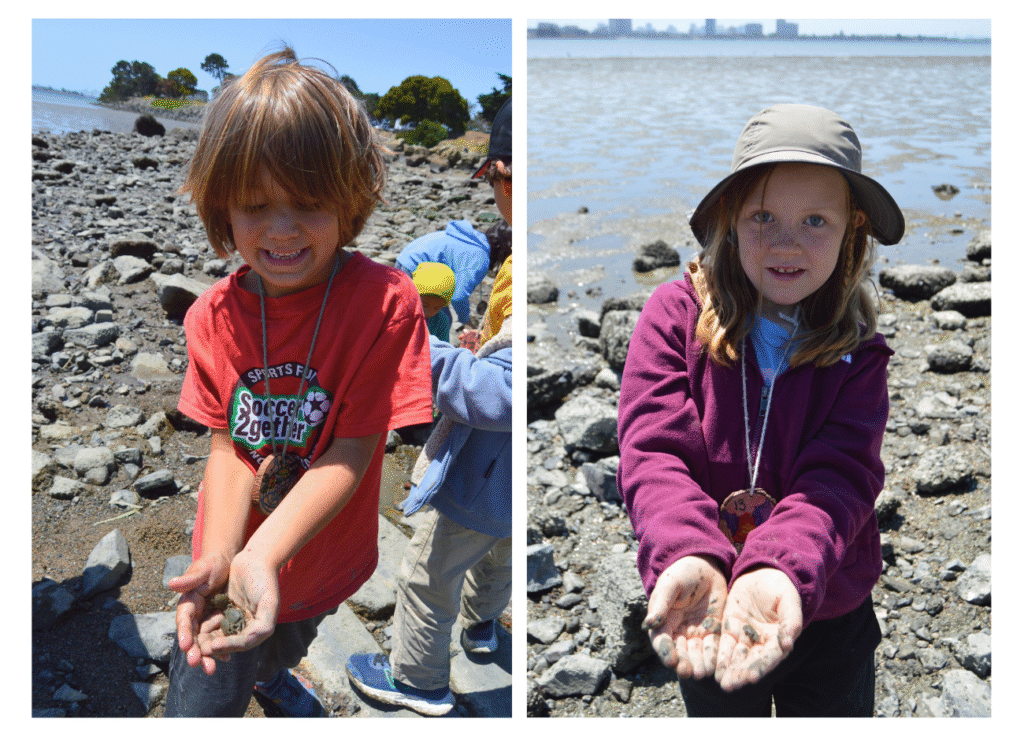
Aquatic Science Week kicked off with hikes and nature investigations in beautiful Tilden Park. Campers followed the pathway of Wildcat Creek to discover a hidden waterfall, and used binoculars to observe the birds, reptiles and amphibians that live in this special habitat. At Berkeley Marina, our young Environmentalists explored the rocky shoreline in search of green shore crabs, beach hoppers, anemones, pile worms, and more! “I saw a bunch of blue mussels attached to that rock over there! I hit the jackpot!” exclaimed Javi. “I love it here! The Berkeley Marina is awesome and there’s so many cool animals!” said Ren. “I saw a green shore crab, and it was almost as big as my palm!” he added.
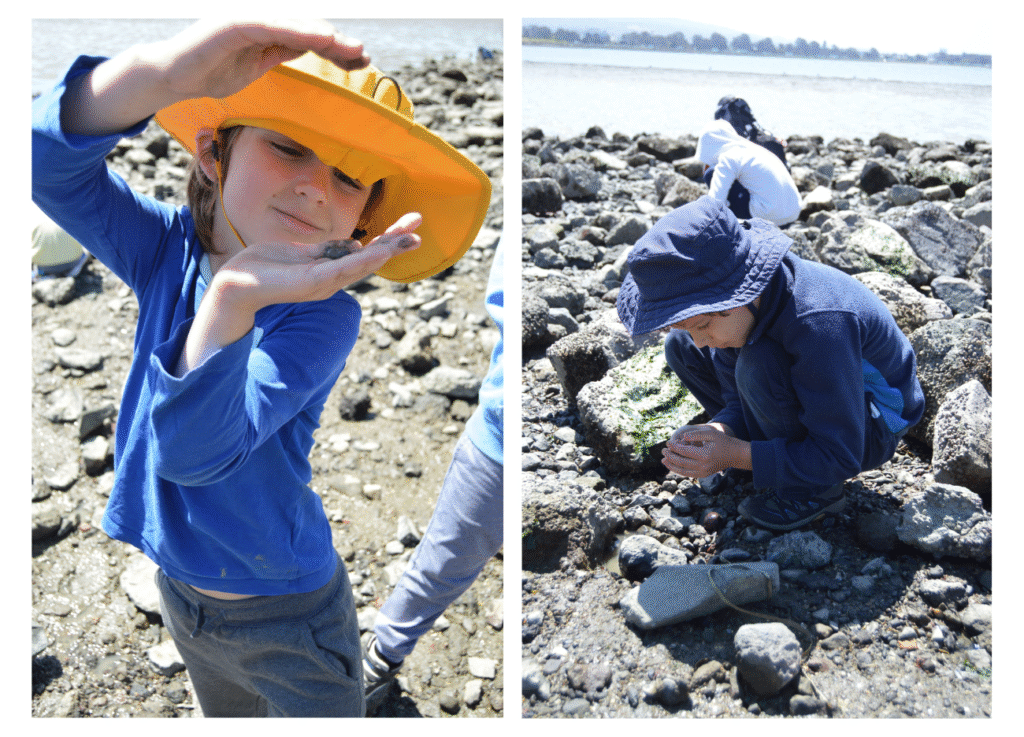
Campers discussed the unique adaptations that rocky shore organisms use to help them survive. Eugene observed, “I think pile worms have sharp pincers to protect themselves from predators!” “I observed that sea anemones can survive without water on dry land at low tide! The sea anemones are called bubble-tipped anemones! They are small and look like eyeballs,” said Evie. “I wonder how the sea anemones manage to live in areas that don’t always have water all the time,” wondered Emmy. “We found a crab molt! Crabs can shed their exoskeletons as they grow, like clothes! Your clothes get smaller as you get bigger, and you have to buy new ones,” observed Mabel.
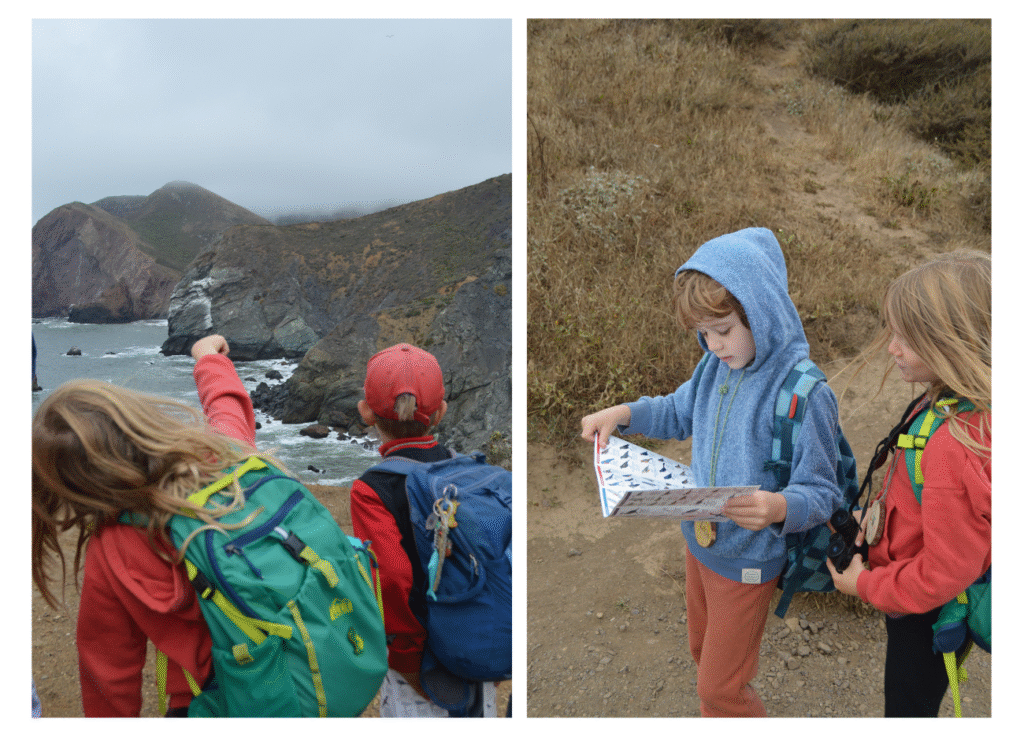
During Marine Science Week, campers continued their investigations at the Pacific Ocean. At Rodeo Beach they hiked through the Marin Headlands cliffs in search of coastal birds and plants. “I saw a flock of brown pelicans land on that rock!” observed Seby. “I used my bird guide to identify if that bird is a crow or a raven. I think it’s a raven! Ravens have a hoarse call, while crows have a characteristic ‘caw’. Their tail shapes are also different!” explained Lily. Campers also identified native plants including California sagebrush and yarrow. “Keep your eyes peeled! We might discover a little bit of magic, up ahead,” said KftB Camp Leader Anaïs Wilson. Our young explorers were filled with wonder as they wandered through the quiet grove of Monterey cypress trees with bated breath. They soon discovered a fairy house nestled at the base of a tree, surrounded by coins and small tokens. “Do you think the fairy is at home?” wondered Theo, peering through the tiny windows. Another highlight of the hike was exploring a former military lookout, where a pond teeming with California newts awaited. Campers observed the newts up close, and learned about their semi-aquatic lifestyle and toxic skin, which equips them with a powerful defense against predators.
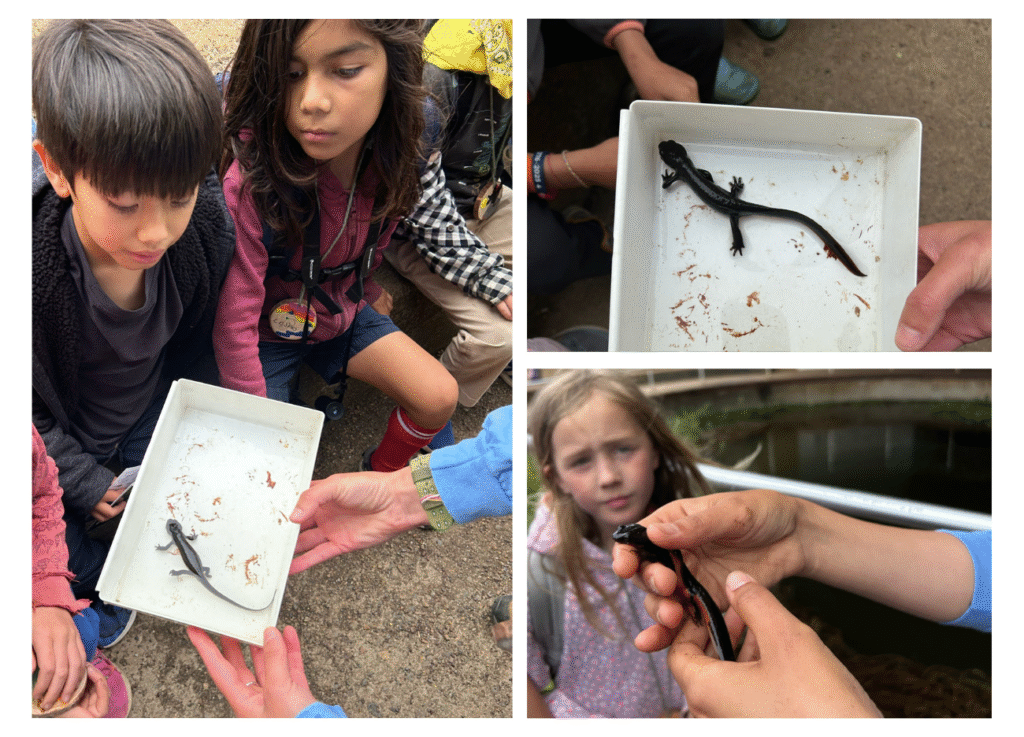
Everyone had a blast playing Ocean Organism Adaptations Tag to help them learn about adaptations that ocean animals might have to help them survive. “My favorite sea animal is a goblin shark. Goblin sharks have jaws like a slingshot to catch prey! I brought a poster that I made with a lot of fun facts about goblin sharks on it. I want to show all of my camper friends!” said Mateo. “Lungfish can breathe air and slither over land. I think they’re called lungfish because they have lungs instead of gills, like us! They’re freshwater fish, and they live in deserts,” said Ethan.
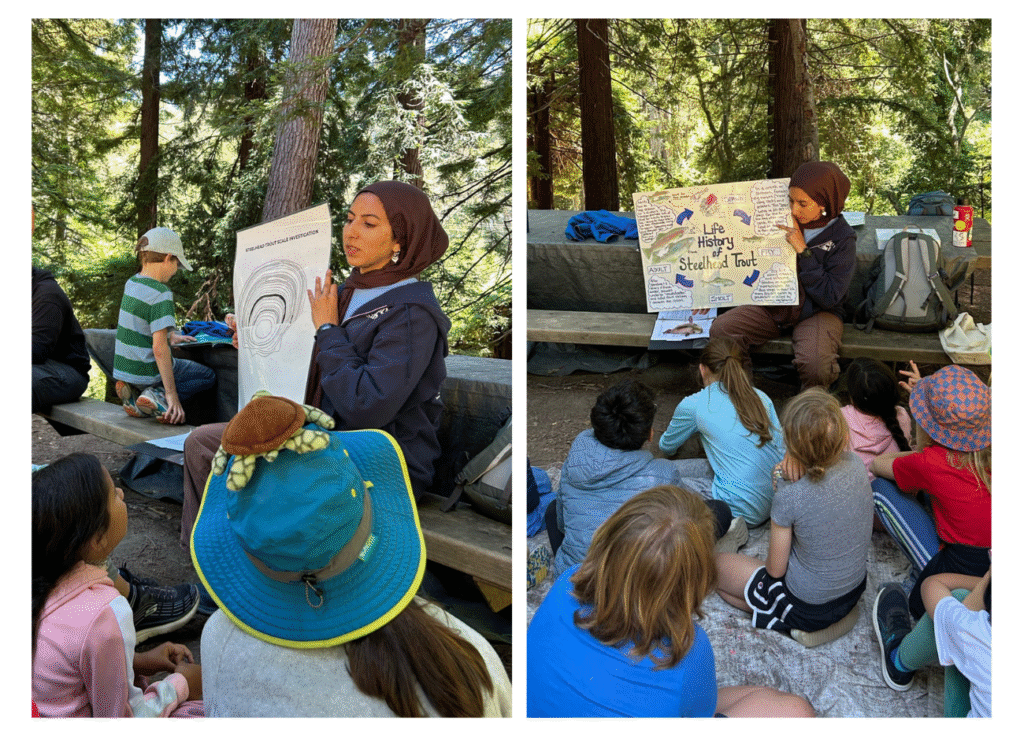
Campers also learned that steelhead trout are an important migratory fish native to the San Francisco Bay Area which travels throughout the connected habitats of our watershed. Trout spawn in freshwater streams, spend time in the San Francisco Bay when they are young and live as adults in the Pacific Ocean. These very special fish especially require a healthy watershed with unpolluted connected waterways to survive. KftB Camp Leaders read the illustrated book ‘Salmon Stream’ by Carol Reed-Jones to help campers understand the journey of migratory fish from creek to bay to ocean. Campers enjoyed coloring steelhead trout lifecycle pictures, and then cut and pasted each life stage into the correct habitat within a map of the local watershed.

KftB Summer Camp helps our campers explore the interconnected habitats within our watershed that connect communities of people and natural environments. Our Summer Camp themes help campers learn how taking action to care for one habitat can have rippling benefits for the entire watershed. We’re proud to offer our campers unique and fun opportunities to learn and explore throughout the San Francisco Bay Watershed and become inspired Environmentalists. We can’t wait to see you all next year, KIDS for the BAY campers!
